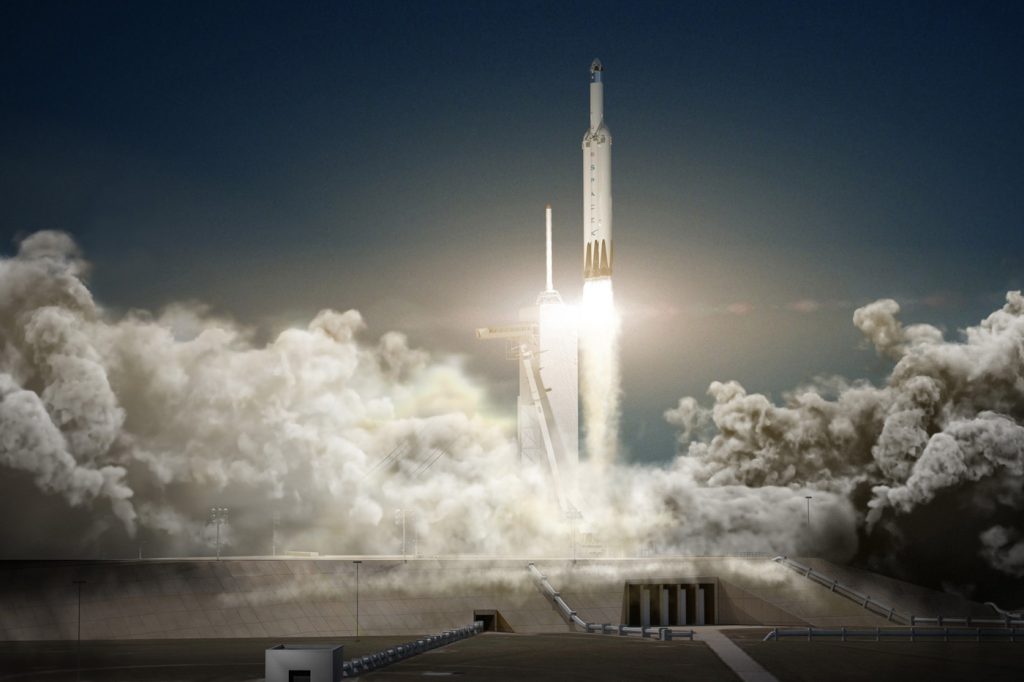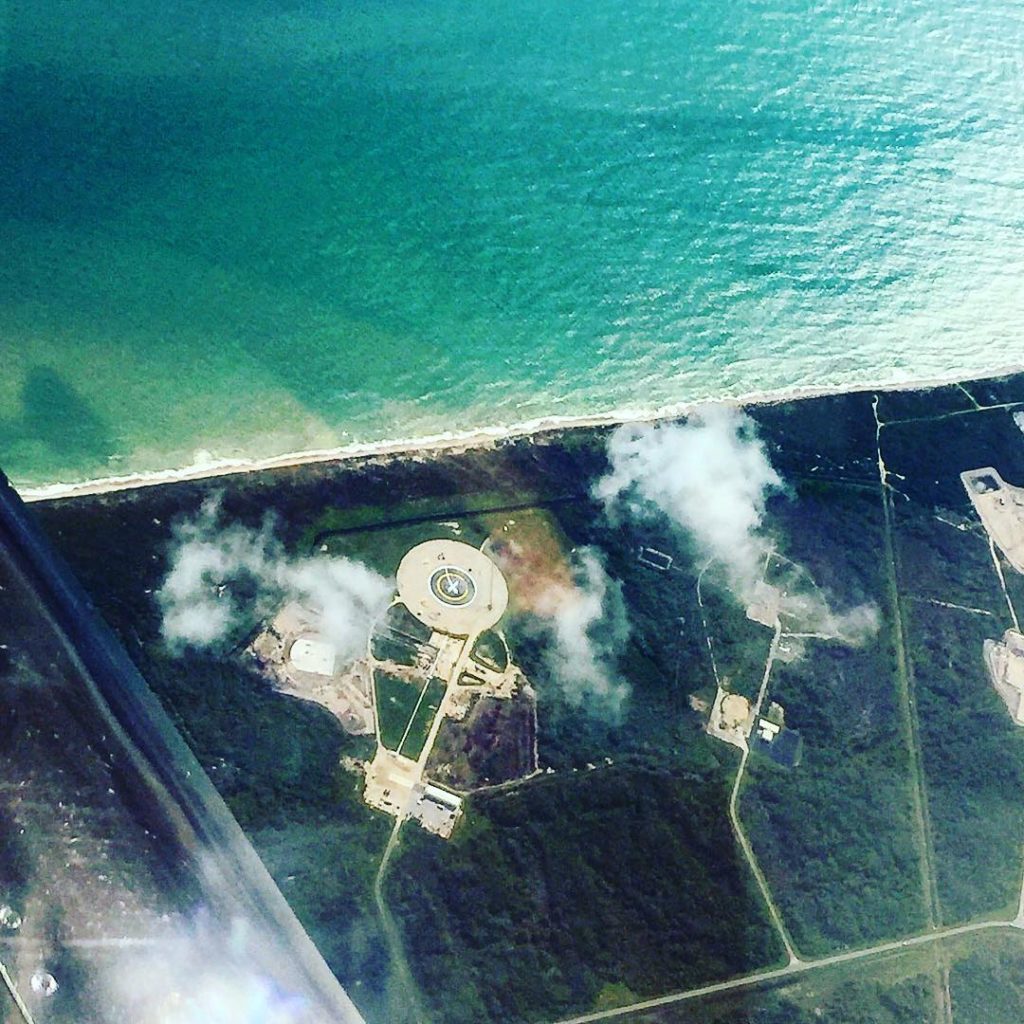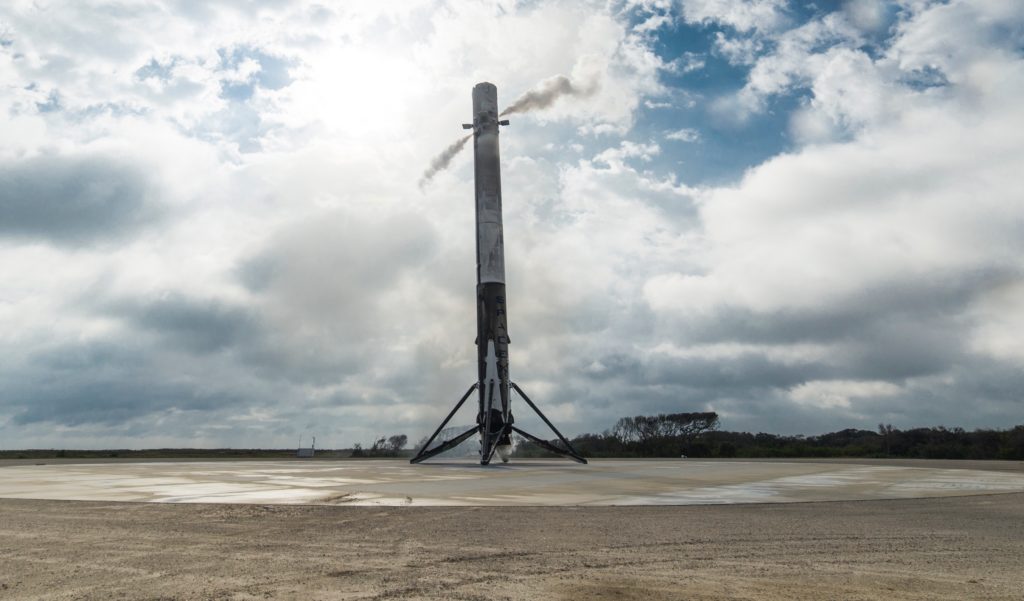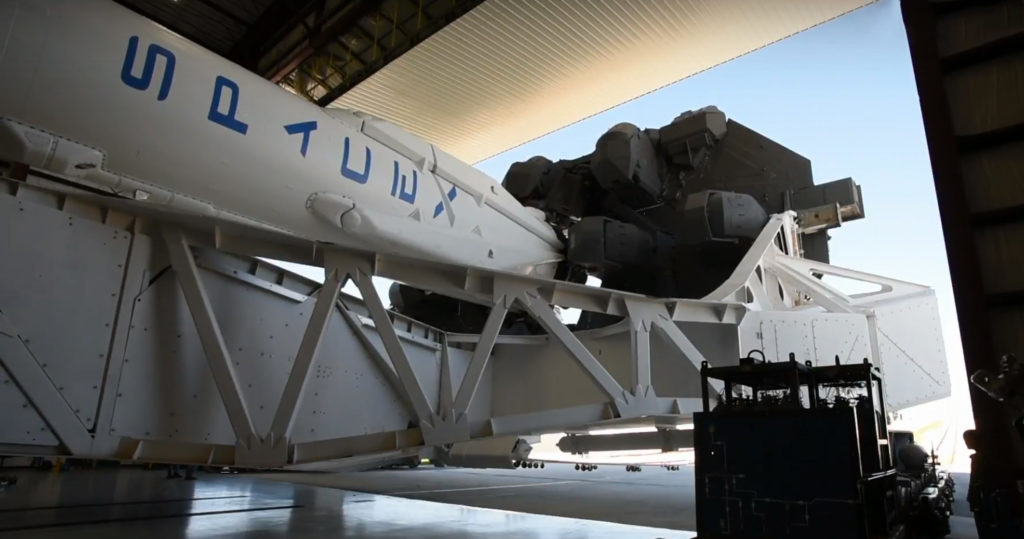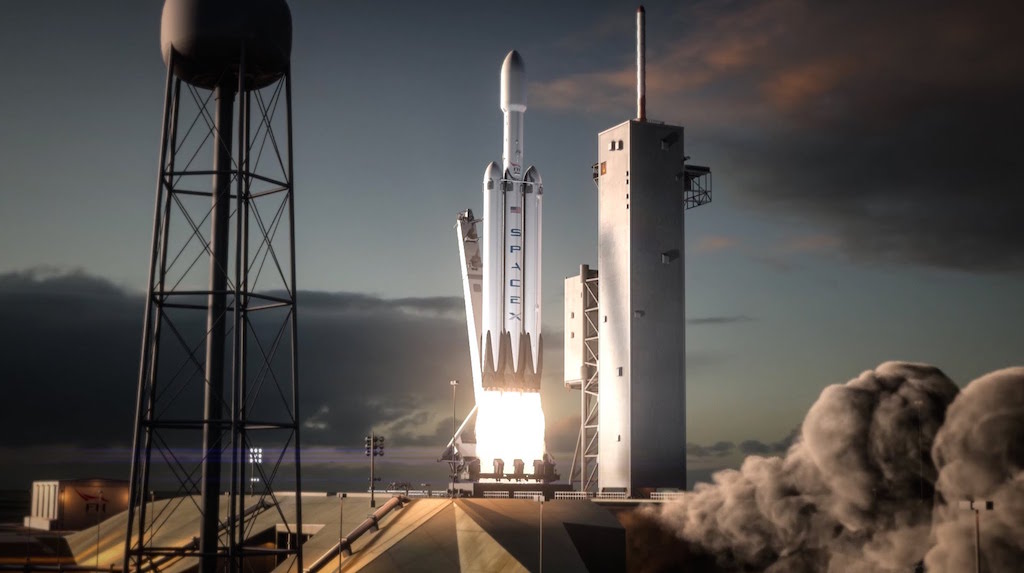
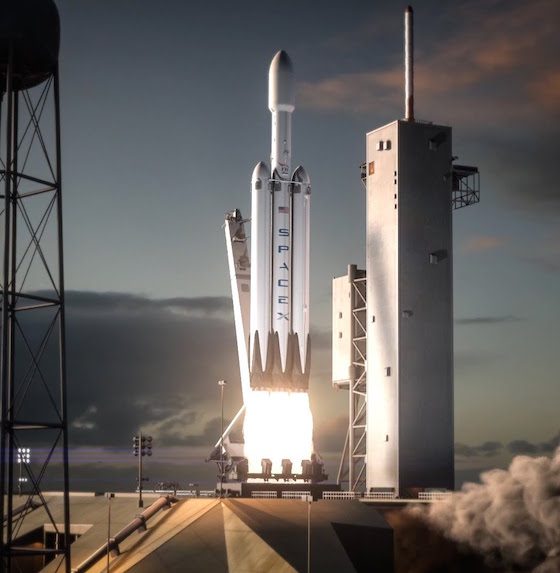
News
SpaceX’s massive Falcon Heavy rocket aims for December 29 inaugural launch
Based on information released by NASASpaceflight.com, a highly reliable source of insider details, SpaceX’s first Falcon Heavy rocket could roll out to the LC-39A launch pad before the end of November, less than a month away. While the first roll-out (or two) will be dedicated solely to “Wet Dress Rehearsals” (WDR), this will be the first time the iconic vehicle makes it to the pad, and will be a historic event regardless of what follows.
No earlier than (NET) “late-November”, the first WDR will see Falcon Heavy go through the usual motions of propellant loading while also conducting an array of systems checks and validations to verify that things are proceeding as expected. This first test will not culminate in any sort of hot-fire, and is more intended to verify that the massive rocket is playing well with the modifications made to the launch pad and the Transporter/Erector/Launcher (TEL) that carries it from the integration facilities to the pad. If major issues come up, they will be dealt with and followed by a second identical WDR. If there are no issues with the first WDR, the second rehearsal could smoothly morph into the first static fire of the integrated vehicle.
As Chris Gebhardt of NSF discusses in some detail, the first Falcon Heavy static fire(s) conducted at LC-39A will be of groundbreaking importance, as SpaceX is currently unable to test fully-integrated Falcon Heavy vehicles at its McGregor, Texas facilities due to the rocket’s sheer power. A lot, thus, rests on these first static fires, currently scheduled to begin around December 15th.
Given the distinctly experimental nature of Falcon Heavy’s inaugural launch, specific dates are best taken as general placemarkers, and the actual dates of the first flow depend entirely upon the tests that precede each subsequent step. Nevertheless, the dates provided by NASASpaceflight point to Falcon Heavy’s first static fire on December 15th, followed two weeks later by a tentative launch date of December 29th.
Staying focused on Mars: Is Falcon Heavy necessary?
Even an uncertain launch date of that specificity is still a historic event for Falcon Heavy, long lampooned and straw-manned as an example of SpaceX’s silly pie-in-the-sky claims and Elon Musk’s oversimplification of complex engineering tasks. There is a grain of truth to such contentions, but they tend to miss the point by huge margins. The actual market for mid-level heavy-lift launch vehicles like Falcon Heavy is quite simply too small to be a major motivator for a commercial launch company like SpaceX. One must remember that SpaceX was not founded to be a run-of-the-mill launch provider. The company’s goal, as has been reiterated ad infinitum, is “enabling human life on Mars”, something that has explicitly prefaced every single job posting on the company’s website for more than half a decade.
For a time, it appeared that Falcon Heavy might eventually be used to enable SpaceX’s Red Dragon program, intended to field-test the technologies needed for month-long cruises in deep space and landing large payloads on Mars. However, the program was cancelled earlier this year, in favor of what Musk called “vastly bigger ships”. Indeed, updated Mars plans unveiled on September 29th showed that SpaceX was forging ahead with an updated BFR and BFS, and hopes to fly its first missions to Mars in 2022.
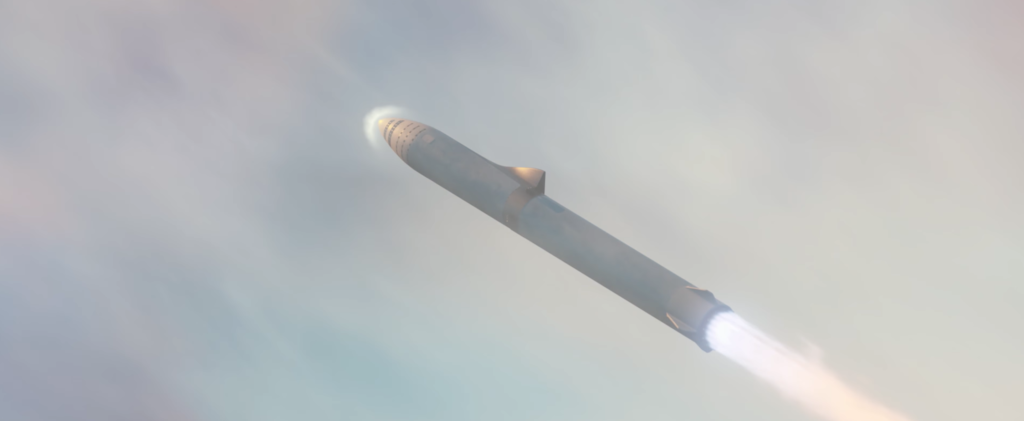
SpaceX’s massive BFR, intended to create and support a human colony on Mars, is visualized taking to the sky. Experience from operating Falcon Heavy will likely benefit BFR once it eventually begins hot-fire testing. (SpaceX)
Falcon Heavy will admittedly become the most powerful operational launch vehicle when it first lifts off in approximately two months, and it will likely retain that title well into 2020, when NASA’s Space Launch System may conduct its first launch. However, regardless of the impressive technological accomplishments it will embody, Falcon Heavy simply is not powerful or affordable enough to ever realistically enable a sustained human presence on Mars. SpaceX does have a small number of customers actively waiting with payloads for Falcon Heavy – its second mission is currently penciled in for June 2018 – and it is reasonable to assume that some or all of those missions will be completed simply out of due diligence. SpaceX may also be motivated to continue the Falcon Heavy program as a possible entrant in a recently-announced USAF competition meant to partially fund the development of multiple US-built heavy-lift launch vehicles.
More simply still, experience derived from igniting and simultaneously operating Falcon Heavy’s 27 Merlin 1D rocket engines will to some extent benefit BFR’s development and operations, as the conceptual vehicle is currently expected to host 31 Raptor engines on its first stage.
- Taken on October 9th by Ted Meyer, this airborne shot shows that LZ-1’s second pad (on the left) is close to completion. (tedwardmeyer/Instagram)
- LZ-1’s operational landing pad has seen hosted multiple successful landings from 2016-2017. (SpaceX)
- The base of the TEL now sports multiple additional launch clamps (large grey protrusions) that will be needed for Falcon Heavy’s three first stage cores. (SpaceX)
Whether Falcon Heavy is to remain a development or production priority for SpaceX after its first several launches is unclear, but the vehicle’s inaugural launch and all subsequent launches are bound to be spectacles to behold. The company’s second Florida-based launch pad, intended to support two simultaneous landings of Falcon Heavy’s side boosters, appears to be nearly complete. At LC-39A, the facility’s TEL already sports major visible modifications necessary for it to operate with Falcon Heavy. All three of the first Heavy’s first stage cores have already completed hot-fire testings in Texas and are now located at Cape Canaveral, awaiting their first integrated tests later this month. Delays to the December 29th launch date are probable, but the various components needed for Falcon Heavy’s first launch have truly come together, and the vehicle’s launch is now simply a matter of “when”. Place your bets!

Elon Musk
Elon Musk confirms xAI’s purchase of five 380 MW natural gas turbines
The deal, which was confirmed by Musk on X, highlights xAI’s effort to aggressively scale its operations.

xAI, Elon Musk’s artificial intelligence startup, has purchased five additional 380 MW natural gas turbines from South Korea’s Doosan Enerbility to power its growing supercomputer clusters.
The deal, which was confirmed by Musk on X, highlights xAI’s effort to aggressively scale its operations.
xAI’s turbine deal details
News of xAI’s new turbines was shared on social media platform X, with user @SemiAnalysis_ stating that the turbines were produced by South Korea’s Doosan Enerbility. As noted in an Asian Business Daily report, Doosan Enerbility announced last October that it signed a contract to supply two 380 MW gas turbines for a major U.S. tech company. Doosan later noted in December that it secured an order for three more 380 MW gas turbines.
As per the X user, the gas turbines would power an additional 600,000+ GB200 NVL72 equivalent size cluster. This should make xAI’s facilities among the largest in the world. In a reply, Elon Musk confirmed that xAI did purchase the turbines. “True,” Musk wrote in a post on X.
xAI’s ambitions
Recent reports have indicated that xAI closed an upsized $20 billion Series E funding round, exceeding the initial $15 billion target to fuel rapid infrastructure scaling and AI product development. The funding, as per the AI startup, “will accelerate our world-leading infrastructure buildout, enable the rapid development and deployment of transformative AI products.”
The company also teased the rollout of its upcoming frontier AI model. “Looking ahead, Grok 5 is currently in training, and we are focused on launching innovative new consumer and enterprise products that harness the power of Grok, Colossus, and 𝕏 to transform how we live, work, and play,” xAI wrote in a post on its website.
Elon Musk
Elon Musk’s xAI closes upsized $20B Series E funding round
xAI announced the investment round in a post on its official website.

xAI has closed an upsized $20 billion Series E funding round, exceeding the initial $15 billion target to fuel rapid infrastructure scaling and AI product development.
xAI announced the investment round in a post on its official website.
A $20 billion Series E round
As noted by the artificial intelligence startup in its post, the Series E funding round attracted a diverse group of investors, including Valor Equity Partners, Stepstone Group, Fidelity Management & Research Company, Qatar Investment Authority, MGX, and Baron Capital Group, among others.
Strategic partners NVIDIA and Cisco Investments also continued support for building the world’s largest GPU clusters.
As xAI stated, “This financing will accelerate our world-leading infrastructure buildout, enable the rapid development and deployment of transformative AI products reaching billions of users, and fuel groundbreaking research advancing xAI’s core mission: Understanding the Universe.”
xAI’s core mission
Th Series E funding builds on xAI’s previous rounds, powering Grok advancements and massive compute expansions like the Memphis supercluster. The upsized demand reflects growing recognition of xAI’s potential in frontier AI.
xAI also highlighted several of its breakthroughs in 2025, from the buildout of Colossus I and II, which ended with over 1 million H100 GPU equivalents, and the rollout of the Grok 4 Series, Grok Voice, and Grok Imagine, among others. The company also confirmed that work is already underway to train the flagship large language model’s next iteration, Grok 5.
“Looking ahead, Grok 5 is currently in training, and we are focused on launching innovative new consumer and enterprise products that harness the power of Grok, Colossus, and 𝕏 to transform how we live, work, and play,” xAI wrote.
Investor's Corner
Tesla gets price target bump, citing growing lead in self-driving

Tesla (NASDAQ: TSLA) stock received a price target update from Pierre Ferragu of Wall Street firm New Street Research, citing the company’s growing lead in self-driving and autonomy.
On Tuesday, Ferragu bumped his price target from $520 to $600, stating that the consensus from the Consumer Electronics Show in Las Vegas was that Tesla’s lead in autonomy has been sustained, is growing, and sits at a multiple-year lead over its competitors.
CES 2026 validates Tesla’s FSD strategy, but there’s a big lag for rivals: analyst
“The signal from Vegas is loud and clear,” the analyst writes. “The industry isn’t catching up to Tesla; it is actively validating Tesla’s strategy…just with a 12-year lag.”
The note shows that the company’s prowess in vehicle autonomy is being solidified by lagging competitors that claim to have the best method. The only problem is that Tesla’s Vision-based approach, which it adopted back in 2022 with the Model 3 and Model Y initially, has been proven to be more effective than competitors’ approach, which utilizes other technology, such as LiDAR and sensors.
Currently, Tesla shares are sitting at around $433, as the company’s stock price closed at $432.96 on Tuesday afternoon.
Ferragu’s consensus on Tesla shares echoes that of other Wall Street analysts who are bullish on the company’s stock and position within the AI, autonomy, and robotics sector.
Dan Ives of Wedbush wrote in a note in mid-December that he anticipates Tesla having a massive 2026, and could reach a $3 trillion valuation this year, especially with the “AI chapter” taking hold of the narrative at the company.
Ives also said that the big step in the right direction for Tesla will be initiating production of the Cybercab, as well as expanding on the Robotaxi program through the next 12 months:
“…as full-scale volume production begins with the autonomous and robotics roadmap…The company has started to test the all-important Cybercab in Austin over the past few weeks, which is an incremental step towards launching in 2026 with important volume production of Cybercabs starting in April/May, which remains the golden goose in unlocking TSLA’s AI valuation.”
Tesla analyst breaks down delivery report: ‘A step in the right direction’
Tesla has transitioned from an automaker to a full-fledged AI company, and its Robotaxi and Cybercab programs, fueled by the Full Self-Driving suite, are leading the charge moving forward. In 2026, there are major goals the company has outlined. The first is removing Safety Drivers from vehicles in Austin, Texas, one of the areas where it operates a ride-hailing service within the U.S.
Ultimately, Tesla will aim to launch a Level 5 autonomy suite to the public in the coming years.
